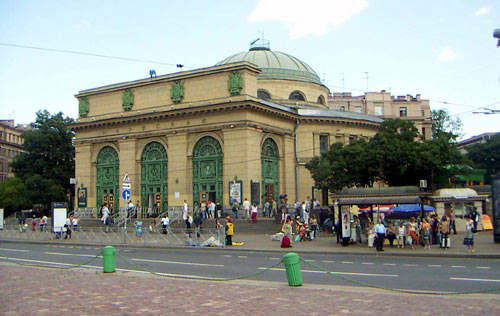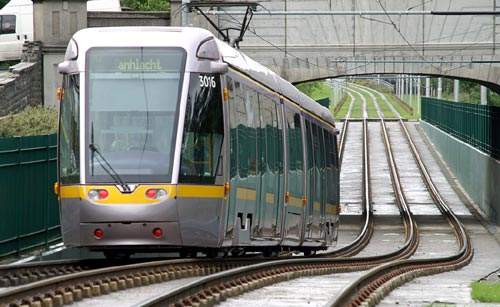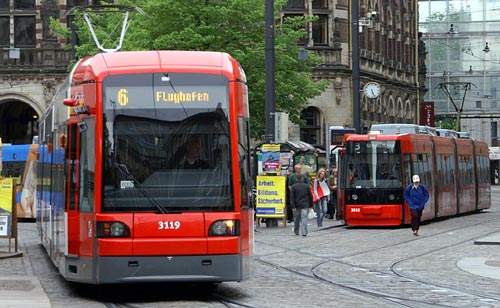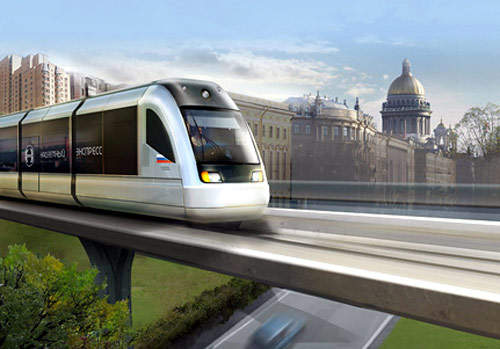Formerly Petrograd (1914–1924) and Leningrad (1924–1991), Saint Petersburg regained an earlier title following the break-up of the Soviet Union. A former Russian capital and with a population of around 4.8 million, it is the second city of Russia after Moscow.
A relatively modern settlement, its foundation in 1703 related to international contacts, something the city has rediscovered as a tourist destination and a business centre.
Urban transport has been influenced by Saint Petersburg’s low-lying site spread across the mainland and many islands of the Neva river delta in the Gulf of Finland.
THE PROJECT
Necessitated by difficult ground conditions, the present four-line metro is the world’s deepest. Long in planning but disrupted by war and economic hardship, the first line opened in 1955. Later lines created a largely radial layout serving the central area well, but less convenient for other journeys and leaving much of the metropolitan area without coverage.
The metro’s importance was illustrated by the severe disruption caused by the enforced 1995–2004 closure of the Line 1 Ploshchad Muzhestva–Lesnaya section. There is a fifth metro line in construction and programme of extensions and upgrading that should add around 80km and 40 new stations to the system over the next 12 years.
Once claimed as the world’s longest, the tram system has undergone reduction in size and a deterioration of service quality. It has lacked the investment needed to sustain a service that could be a preferable alternative to the private bus services that have sprung up to deter the use of private cars.
Russian Railways (RZD), a fully state-owned monopoly, operates the city’s suburban train (elektrichka) network. There are five main heavy rail stations, all with metro interchange, variously covering long distance and suburban services.
In December 2007 the St. Petersburg Government gave approval for bidding processes leading to implementation of an ambitious project to sidestep the problems of the tramway, metro limitations and slow road transits. They are seeking a private partner, likely to be a consortium of companies, to work with their wholly public sector body, Nadzemny Express.
The $710m contract will be to build, maintain and operate the system for up to 30 years. A Nadzemny Express presentation was made in London during February 2008 to organisations representing finance, construction, equipment, project management and service operation. Project advisers include the World Bank, Mott MacDonald and Allen & Overy. The European Bank for Reconstruction and Development has expressed commitment to the scheme.
INFRASTRUCTURE
The Nadzemny Express – Nadex – is a proposed light railway approximately 30km (18.6 miles) long to run across the southern suburbs of the city, cutting across and thereby linking suburban rail and three metro lines.
It has been specified that the electrified system will have a gauge at the Russian standard of 1,524mm. Nadex will branch at Ulitsa Pionerstroya, creating two western termini: at the new 205ha Chinese-financed Baltic Pearl mixed-use development and at the Congress Centre at Strelna.
To avoid obstacles and delay, at least two thirds of the 16-station line will be on elevated sections that must be sufficiently clear of roadways as to not obstruct the passage of goods vehicles. At grade sections will also be segregated from road traffic.
Passing through five city districts and with an average station separation of 1,500km, the eastern Nadex terminus will be an interchange at Obukhovo metro station. The system is specified to allow access to stations for those with disabilities and for level entry to trains from 350mm-high platforms.
ROLLING STOCK
Nadzemny Express is keen that the technology deployed on the project is proven in service with other intensively used urban transit systems. The companies expressing interest in the Nadex project indicate that rolling stock is likely, at least in part, to be supplied from Western Europe or the Far East.
Projected passenger journeys for the first phase of Nadex are 180,000 daily. Built with the capacity for handling a fleet one-third larger than that required for the first phase, the maintenance and repair depot is due to be located near Baltic Pearl.
SIGNALLING AND COMMUNICATIONS
The control centre for the system will be part of the system depot. It is intended that Nadex ticket prices will be set and received by government in Saint Petersburg, with the operator receiving a commission. Fare levels will relate to other public transport modes and are to fit within an overall ticketing system, but with a premium to reflect the anticipated better timings, frequency and comfort of the Nadex service.
Real time displays of service information are planned, with the facility for such information to be communicated via mobile phones and the web.
THE FUTURE
The project deadline for Nadex bid submissions is November 2008 and a preferred bidder is expected to be announced by the end of that year. An opening date of 2010 is considered possible for the first Nadex phase, although issues such as ensuring reliability, gaining finance and getting approvals may affect completion dates.
Expansion of the system is already envisaged, including an extra 8km (5 miles) to Saint Petersburg’s Pulkova international airport and to Peterhof, 22km (13.7 miles).











